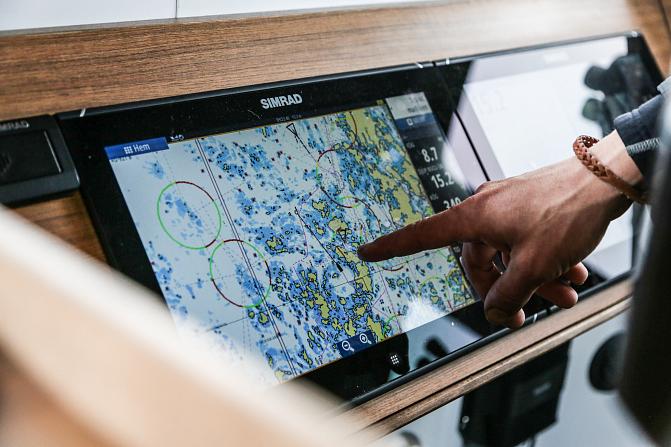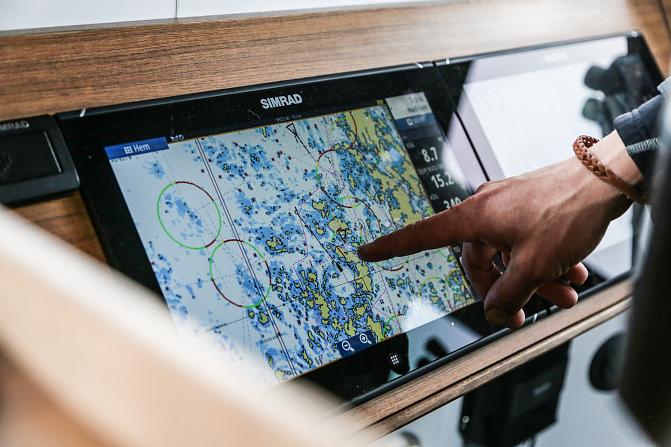The location will largely determine how smoothly a new fish farm gets under way. This is well known in Nordic Trout, which farms fish for food, and in the city of Uusikaupunki, which wants to attract fish farmers to its territory. Both Nordic Trout and Uusikaupunki are looking for sustainable farming sites using Luke’s FINFARMGIS method.

More Finnish fish – a carefully selected farming site is needed
On this page


When a city or municipality wants to attract businesses, it ensures that land use planning supports reaching the goal. In Uusikaupunki, water areas were also taken into account.
“We decided to look for sites that are suitable for sustainable fish farming and then apply for an environmental permit together with a fish farming company, which we will choose by competitive tendering,” says Leena Arvela-Hellén, City Architect of Uusikaupunki.
Rough guidelines for site selection are provided by the National Spatial Plan for Aquaculture. However, Uusikaupunki wanted more accurate and up-to-date information. The Natural Resources Institute Finland (Luke) was chosen as the data provider. Luke had already conducted similar studies in state-owned water areas managed by Metsähallitus.
The FINFARMGIS method weighs the environmental impact
Luke supported the Uusikaupunki project with its FINFARMGIS method, which simultaneously considers several factors influencing the location of fish farming. The method takes into account other uses of the location and the depth and openness of the water area, biodiversity and ecological status, as well as the distance to reefs, bird islands, holiday homes and the shore, to mention but a few.
“Much of the criteria in the FINFARMGIS method are related to the environmental impact of fish farming, but of course the method also includes how well the site enables profitable farming. From an environmental point of view, the best place would be the open sea, but the growing conditions are difficult there. As the service distance increases, large installations are required to operate profitably. Often a good compromise can be found in the outer archipelago,” explains Markus Kankainen, Researcher at Luke.
In Uusikaupunki, the best areas suitable for sustainable fish farming were assessed separately for the production of fry and larger fish.
“The FINFARMGIS method, enabled us to find the most suitable areas for fish farming very accurately, and we can also include the FINFARMGIS analysis in the environmental permit application,” says Arvela-Hellén.
In order to assess social sustainability, a participatory tool developed by Luke was also tested in Uusikaupunki. The tool allowed residents and holiday cottage residents to share their views on the preliminary fish farming sites marked on the map produced by the FINFARMGIS method.
With the FINFARMGIS method, we were able to find the most suitable areas for fish farming very accurately. — Leena Arvela-Hellén, Uusikaupunki
Accurate and flexible tool – always up to date
Nordic Trout, which farms rainbow trout, has 30 environmental permits for different stages of fish farming in different parts of Finland. The company has applied for permits with the assistance of consulting firms, and the choice of location has been guided primarily by the National Spatial Plan for Aquaculture. In the most recent projects, permit applicants have already utilized Luke’s FINFARMGIS method.
“The FINFARMGIS method has already been a key tool in three projects when determining the best possible location for the farm before applying for an environmental permit. FINFARMGIS takes into account all uses of the area and changes in legislation. It always tells the current situation and guides the choice of location flexibly and accurately,” says Jorma Leed, Production Manager at Nordic Trout.
Leed hopes that the FINFARMGIS method will have a formal status in the environmental permit application process alongside or even as a substitute for the National Spatial Plan for Aquaculture.
The FINFARMGIS analysis provides more detailed information than the National Spatial Plan for Aquaculture and is continuously updated. — Jorma Leed, Nordic Trout
More sites for fish farming – more domestic fish
How well, for example, Uusikaupunki and Nordic Trout find new sites for fish farming will ultimately affect what Finns eat. At present, less than a fifth of the fish eaten in Finland is domestic. The increase in Finnish fish farming would bring to our tables especially domestic rainbow trout and possibly also new farmed species.
“We want to improve the supply of domestic fish, and that is possible now that fish farming methods have become environmentally more sustainable and the choice of farming location has become easier,” states Arvela-Hellén of Uusikaupunki.
“The environmental effects of fish farming have been mitigated in recent decades, and now fish farming accounts for about one percent of the nutrient load in Finnish coastal waters, in the Baltic Sea,” says Kankainen of Luke.
Mitä tehtiin?
Asiakas: Uusikaupunki
Tarve: Kaupunki haluaa lisätä elinkeinotoimintaa alueellaan helpottamalla sen aloittamista. Lisäksi se haluaa lisätä kotimaista kalantuotantoa. Näin syntyi tarve selvittää, miten kaupungin vesialueita voitaisiin hyödyntää kalankasvatukseen.
Ratkaisu: Kumppaneiksi valitut Gaia Consulting sekä Luke selvittivät, mitkä vesialueet soveltuvat parhaiten kalankasvatukseen. Luke käytti hankkeessa FINFARMGIS-menetelmäänsä.
Vaikuttavuus: Uudessakaupungissa mahdollisesti alkava kalankasvatus parantaisi kotimaisen kirjolohen ja mahdollisesti muidenkin kasvatuslajien saatavuutta ja toisi liiketoimintaa ja työpaikkoja kaupunkiin.
Rahoitus: Euroopan meri- ja kalatalousrahasto, Uusikaupunki 10 %
Asiakas: Nordic Trout
Tarve: Kalankasvatusyritys Nordic Trout etsii jatkuvasti uusia alueita kalankasvatukselle. Yritys haluaa löytää parhaan mahdollisen sijainnin, joka täyttäisi niin ympäristökriteerit kuin taloudellisetkin kriteerit.
Ratkaisu: Nordic Trout on hyödyntänyt kolmella eri alueella Luken FINFARMGIS-menetelmää optimaalisen sijainnin löytämiseksi ja ympäristölupahakemuksen tueksi.
Vaikuttavuus: Uudet kalankasvatuslaitokset lisäävät kotimaisen kalan tarjontaa, yrityksen liikevaihtoa, työllisyyttä ja verotuloja.
Rahoitus: Nordic Trout 100 %
Tutustu palveluun

